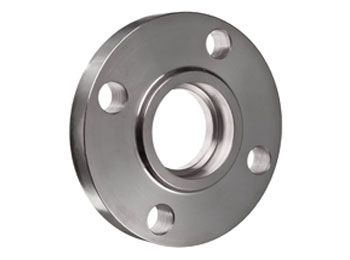Flat welding flange refers to the flange connected to the container or pipeline by fillet welding. It can be any flange. According to the degree of integrity of the flange ring and straight section at the time of design, check the integral flange or loose flange respectively. There are two types of rings for flat welding flanges: neck and non-neck. Compared with the neck butt welding flange, the flat welding flange has a simple structure and less material, but its rigidity and sealing performance are not as good as the neck butt welding flange. Flat welding flanges are widely used in the connection of medium and low pressure vessels and pipelines.

The flat welding flange not only saves space and weight, but more importantly, it ensures that the joint will not leak and has good sealing performance. Due to the reduced diameter of the seal, the size of the compact flange is reduced, which will reduce the cross-section of the sealing face. Second, the flange gasket has been replaced by a sealing ring to ensure that the sealing surface matches the sealing surface. In this way, only a small amount of pressure is required to compress the cap tightly. As the required pressure decreases, the size and quantity of bolts can be reduced accordingly, so a new type of flat welding flange with small size and light weight (70% to 80% lighter than traditional flanges) has been designed. Therefore, the flat welding flange type is a relatively high-quality flange product, which reduces the quality and space, and plays an important role in industrial applications.
The sealing principle of the flat welding flange: the two sealing surfaces of the bolt squeeze the flange gasket and form a seal, but this will also cause the seal to be damaged. In order to maintain the seal, enormous bolt force must be maintained. Therefore, the bolt must be made larger. Larger bolts must match larger nuts, which means larger diameter bolts are required to create conditions for tightening the nuts. However, the larger the bolt diameter, the more the applicable flange will bend.
The method is to increase the wall thickness of the flange part. The whole device will require enormous size and weight, which becomes a particular problem in the offshore environment, because in this case, the weight of the slip-on flange is always the main problem that one has to pay attention to.